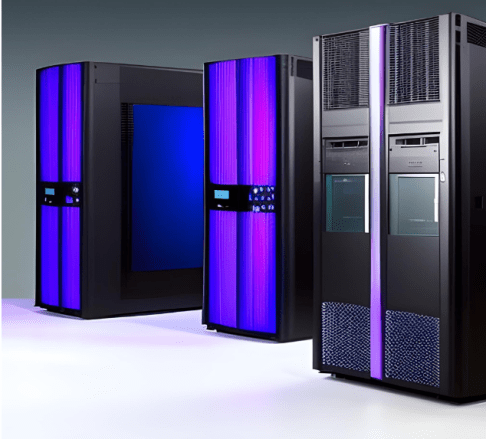Mainframes: The Timeless Powerhouses of Modern Computing
In the ever-evolving landscape of technology, where new advancements emerge rapidly, it is natural to question the relevance and existence of long-standing computing systems. Mainframes, with their rich history and reputation for power and reliability, have been a cornerstone of enterprise computing for decades. In this blog post, we will address the question of whether IBM still produces mainframes or if they have become a thing of the past.
The Resilient Evolution of IBM Mainframes:
IBM, a pioneer in mainframe technology, continues to innovate and invest in the development of mainframes to meet the evolving needs of modern businesses. Far from being outdated, mainframes have undergone significant transformations, ensuring their continued relevance and staying power in today’s digital landscape. Let’s explore some key reasons why mainframes are still a vital force in the technology world.
- Unmatched Scalability and Performance:
One of the primary reasons for the enduring presence of mainframes is their exceptional scalability and performance. IBM mainframes are purpose-built to handle massive volumes of data and process complex workloads efficiently. With advancements in hardware and software, modern mainframes can seamlessly scale up to handle the ever-growing demands of today’s data-intensive applications.
IBM’s z15 mainframe, for example, is designed to deliver unparalleled performance, capable of processing up to 1 trillion secure web transactions per day. These systems can effortlessly handle workloads from multiple applications, databases, and users simultaneously, ensuring optimal performance and responsiveness.
- Enhanced Security and Compliance:
Security remains a top concern for organizations across industries. Mainframes have a long-standing reputation for robust security features, making them an ideal choice for handling sensitive data and critical applications.
IBM mainframes incorporate advanced encryption algorithms, secure access controls, and built-in security mechanisms to protect data at rest and in transit. They adhere to industry standards and compliance regulations, providing a secure environment for highly regulated sectors such as finance, healthcare, and government.

- Reliability and High Availability:
Mainframes are renowned for their unparalleled reliability and high availability. Organizations that require continuous operations, minimal downtime, and uninterrupted access to critical applications still rely on mainframes as the backbone of their IT infrastructure.
IBM mainframes incorporate redundant hardware components, fault-tolerant architectures, and advanced error detection and recovery mechanisms. These features ensure that mainframes can withstand hardware failures, perform online maintenance, and dynamically allocate resources while maintaining optimal uptime levels.
- Modern Mainframe Ecosystem:
IBM has cultivated a vibrant and evolving ecosystem around mainframes, ensuring their adaptability to emerging technologies and trends. The z/OS operating system, designed specifically for mainframes, continues to evolve and embrace modern paradigms.
IBM’s mainframe ecosystem includes a rich library of software solutions, development tools, and frameworks tailored for mainframe environments. These resources enable developers to build and deploy modern applications while leveraging the power and reliability of mainframes.
- Cloud and Hybrid Integration:
In response to the growing adoption of cloud computing, IBM has seamlessly integrated mainframes into hybrid cloud environments. The IBM Z mainframe platform is designed to work seamlessly with IBM Cloud, enabling organizations to extend their mainframe capabilities to the cloud and leverage cloud services while maintaining the security and reliability of mainframes.
IBM’s investment in technologies like IBM z/OS Container Extensions (zCX) allows for containerized workloads and easier integration with modern DevOps practices. This integration ensures that mainframes can coexist and collaborate within hybrid cloud architectures, accommodating the diverse needs of modern enterprises.
Conclusion:
Contrary to the notion that mainframes are a thing of the past, IBM continues to invest in their development, innovation, and integration with emerging technologies. Mainframes remain a critical component of enterprise computing, providing unmatched scalability, performance, security, reliability, and high availability.
The evolution of mainframes has embraced modern paradigms, such as cloud integration, hybrid environments, and containerization, ensuring their continued relevance in the digital age. Organizations across industries continue to rely on IBM mainframes to handle their most critical workloads, safeguard sensitive data, and deliver consistent and reliable performance.
As technology evolves, mainframes adapt and remain at the forefront, showcasing their timeless power and ability to meet the ever-changing needs of businesses.
References:
- IBM Z mainframe website: https://www.ibm.com/it-infrastructure/z
- IBM Systems Magazine – Mainframe Edition: https://www.ibmsystemsmag.com/IBM-Z/Mainframe-News/
- IBM Redbooks: https://www.ibm.com/redbooks/
- IBM Z Hardware Documentation: https://www.ibm.com/docs/en/zhardware
